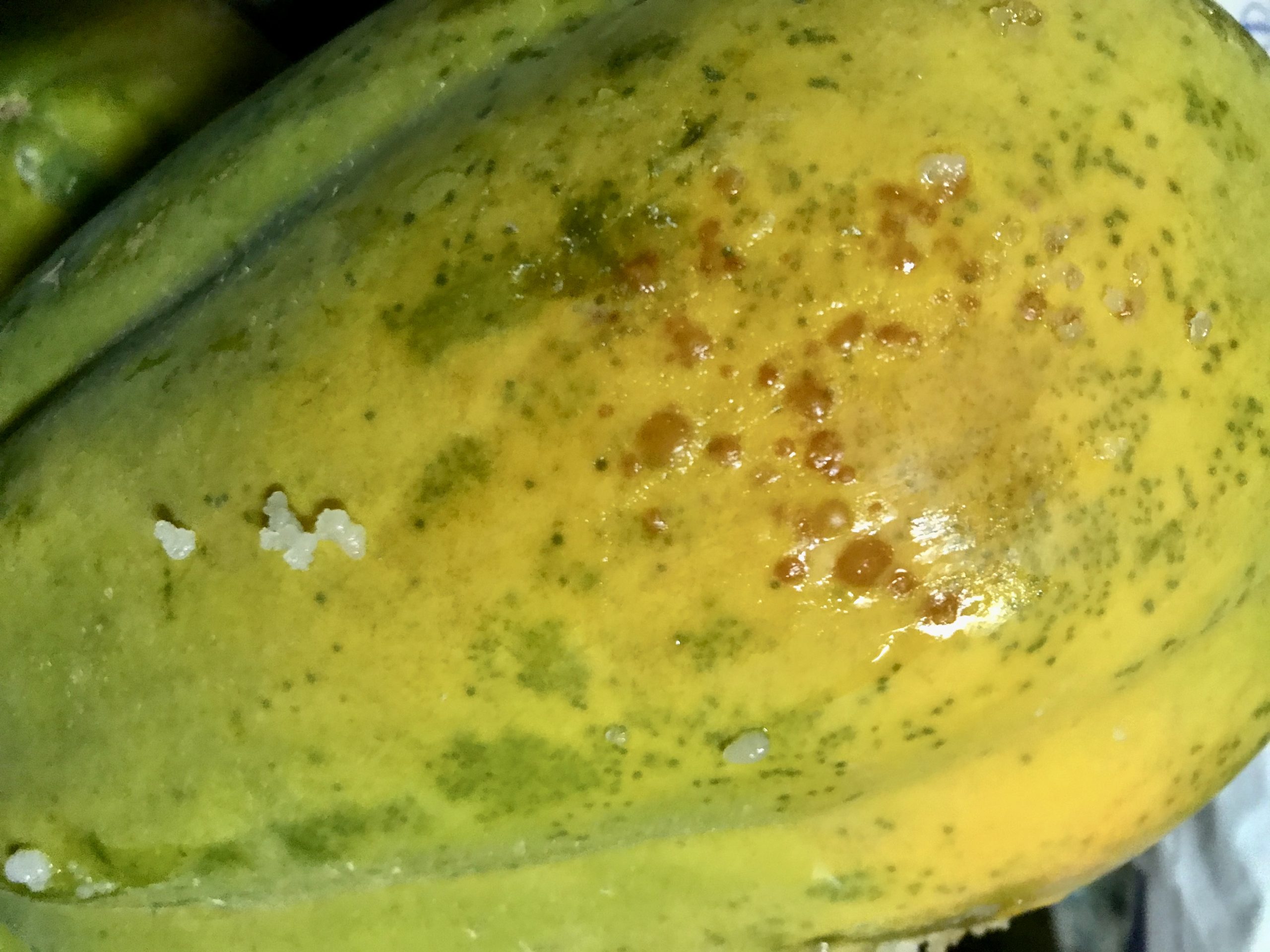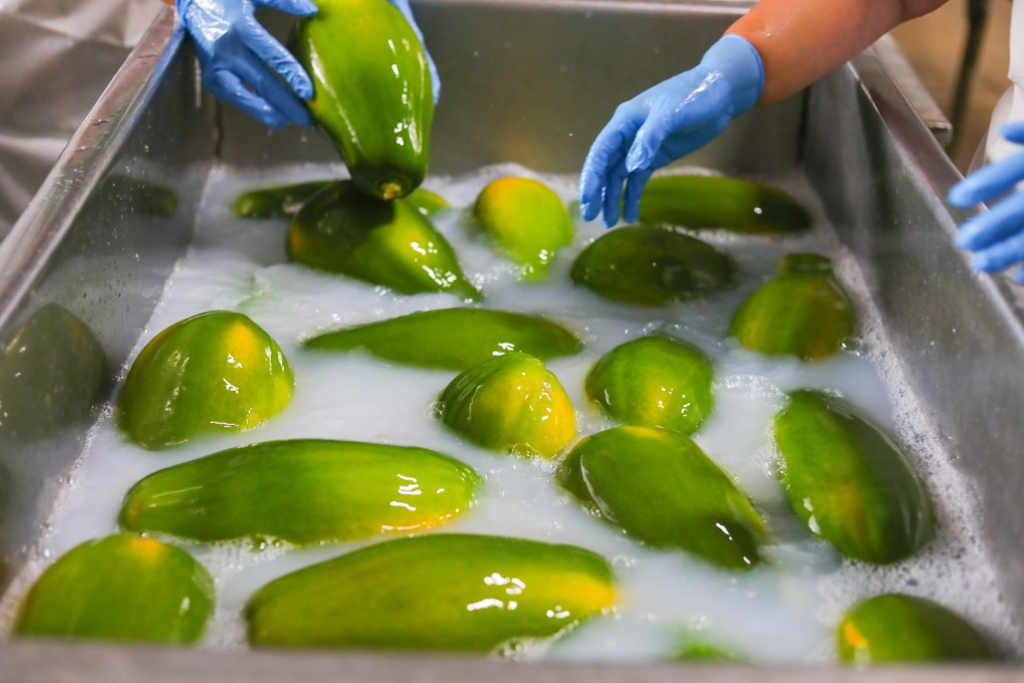Chlorine Dioxide with the Papaya industry

Papaya Anthracnose
Papaya anthracnose is caused by the fungus Colletotrichum gloeosporioides and is one of the most widespread and devastating disease of papaya, especially during storage.
It is a major constraint to papaya production as well as to export of the fruit to bigger overseas markets.
Anthracnose infections are usually initiated in the field at early stages of fruit development, but the pathogen remains quiescent until the fruit reaches the climacteric phase.
The fungus is spread by wind and rain while disease emergence is favoured by high temperature and humidity. The disease can have a serious impact on refrigerated fruit for export.
Disease Cycle
The Colletotrichum fungus overwinters majorly in plant debris and the produced spores depend upon water for spread and infection. They may also be spread by cultivating equipment or workers when the foliage is wet.
The fungus can penetrate the plant tissue directly and does not require natural openings e.g., stomata or wounds, and symptoms may appear within 5-7 days after infection has taken place.
Disease development is favoured by warm, humid, and rainy weather usually frequent intervals.
Signs & Symptoms
The fungus can infect immature green fruits attached to the plant and remain quiescent until the fruit begins to ripen, when symptoms of anthracnose or chocolate spot appear.
The first symptoms are small well defined dried pink spots on the surface of ripening fruit.

PROTOCOLO para el hongo Fusarium oxysporum f.sp cubense Raza Tropical 4
- PROTOCOLO para prevenir la PROPAGACIÓN
- PROTOCOLO para descontaminar un comienzo de enfermadad
- PROTOCOLO para ÁREAS CONTAMINADA

